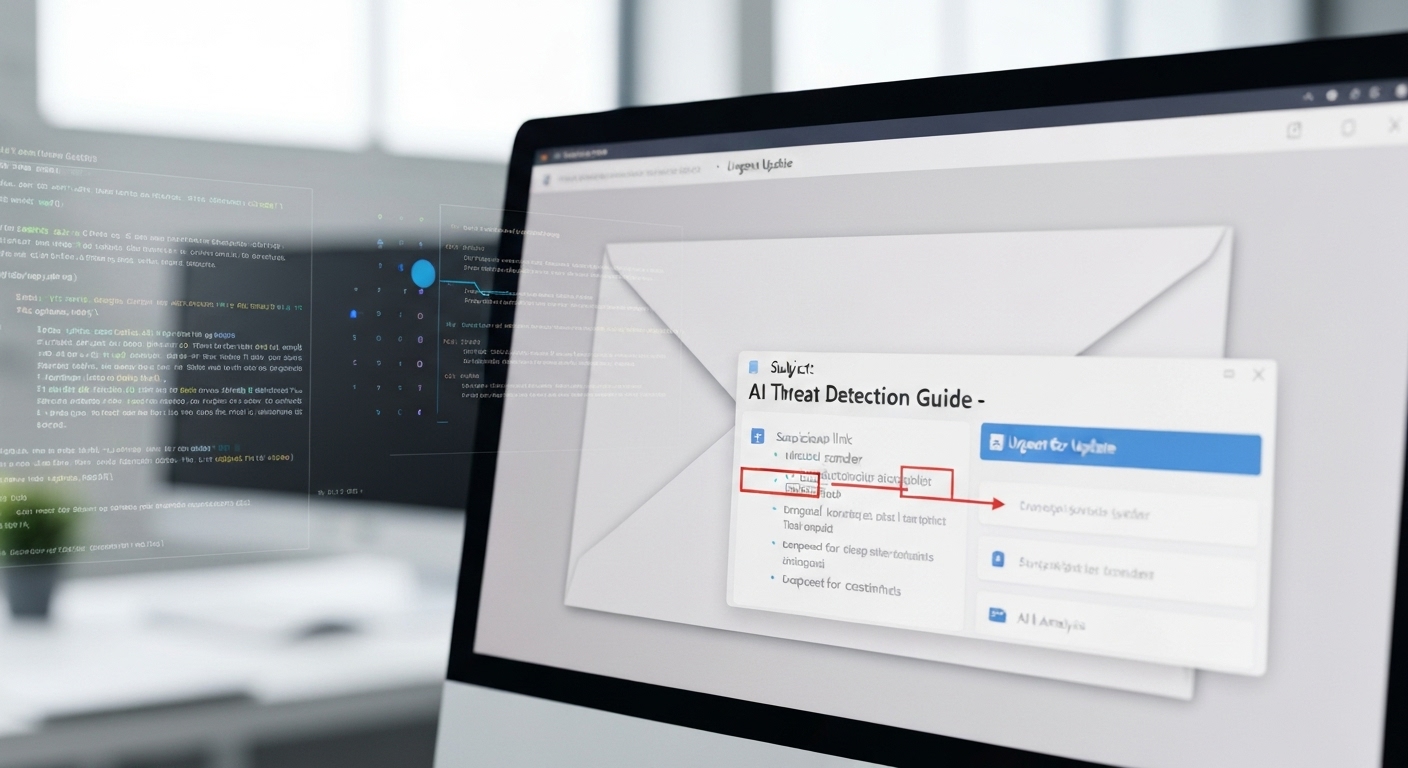How to Use AI for Threat Detection : A Comprehensive Guide
how to use ai for threat detection is a crucial skill in today’s cybersecurity landscape. As cyber threats become increasingly sophisticated, traditional security measures often fall short. Artificial intelligence (AI) offers a powerful solution to enhance threat detection capabilities, automate security processes, and improve overall cybersecurity posture.

Understanding the Basics of AI in Threat Detection
AI’s role in cybersecurity primarily revolves around its ability to analyze vast amounts of data, identify patterns, and predict potential threats. This capability stems from two core technologies: machine learning (ML) and natural language processing (NLP).
- Machine Learning (ML): ML algorithms learn from data without explicit programming, allowing them to identify anomalies and predict future threats based on historical data.
- Natural Language Processing (NLP): NLP enables AI to understand and interpret human language, allowing it to analyze text-based data like security logs, emails, and social media posts to identify potential threats.
Benefits of Using AI for Cyber Threat Intelligence
Implementing AI for threat detection provides numerous benefits, including:
- Improved Accuracy: AI algorithms can detect threats with greater accuracy than traditional methods, reducing false positives and ensuring that security teams focus on genuine threats.
- Enhanced Speed: AI can analyze data much faster than humans, enabling rapid threat detection and response.
- Increased Efficiency: AI automates many security tasks, freeing up security professionals to focus on more strategic initiatives.
- Proactive Threat Hunting: AI can identify potential threats before they cause damage, allowing organizations to proactively mitigate risks.
- Scalability: AI solutions can easily scale to accommodate growing data volumes and increasing threat complexity.

Implementing AI for Threat Detection: A Step-by-Step Guide
Successfully implementing AI for threat detection requires a strategic approach. Here’s a step-by-step guide:
1. Define Your Security Objectives
Clearly define your security objectives and identify the specific threats you want to address with AI. This will help you choose the right AI tools and solutions.
2. Collect and Prepare Data
AI algorithms require large amounts of data to learn and perform effectively. Collect relevant data from various sources, including security logs, network traffic, and threat intelligence feeds. Ensure the data is clean, accurate, and properly formatted.
3. Choose the Right AI Tools
Select AI-powered security tools that align with your security objectives and data infrastructure. Consider factors such as the tool’s accuracy, scalability, and ease of integration with existing security systems.
Many AI security tools are available, including:
- Security Information and Event Management (SIEM) Systems: Enhanced with AI capabilities.
- Endpoint Detection and Response (EDR) Solutions: Leveraging AI for advanced threat detection.
- Network Traffic Analysis (NTA) Tools: Using AI to identify anomalous network behavior.
4. Train and Test AI Models
Train your AI models using the prepared data. Continuously test and refine the models to improve their accuracy and effectiveness. This includes monitoring performance and retraining the models with new data to adapt to evolving threats.

5. Integrate AI with Existing Security Systems
Integrate AI-powered security tools with your existing security infrastructure to create a comprehensive threat detection and response system. This ensures seamless data flow and coordinated security operations.
6. Automate Security Processes
Automate routine security tasks using AI, such as threat analysis, incident response, and vulnerability management. This frees up security professionals to focus on more complex and strategic tasks.
7. Monitor and Evaluate Performance
Continuously monitor and evaluate the performance of your AI-powered security system. Track key metrics such as threat detection accuracy, response time, and overall security effectiveness. Regularly review and update your AI models and security processes to maintain optimal performance.
Examples of AI in Threat Detection
Several real-world examples demonstrate the effectiveness of AI in threat detection:
- Anomaly Detection: AI can identify unusual patterns in network traffic or user behavior that may indicate a security breach.
- Malware Detection: AI can analyze file characteristics and code patterns to identify malware, even previously unknown variants.
- Phishing Detection: AI can analyze email content and sender information to identify phishing attempts with high accuracy.
- Insider Threat Detection: AI can monitor user activity and identify potential insider threats based on unusual behavior patterns.

Challenges and Considerations
While AI offers significant benefits for threat detection, there are also challenges to consider:
- Data Requirements: AI algorithms require large amounts of high-quality data to perform effectively.
- Complexity: Implementing and managing AI-powered security systems can be complex and require specialized expertise.
- Bias: AI models can be biased based on the data they are trained on, leading to inaccurate or unfair results.
- Evasion: Adversaries may attempt to evade AI-powered security systems by using techniques such as adversarial attacks.
Addressing these challenges requires careful planning, ongoing monitoring, and continuous improvement of AI models and security processes.
The Future of AI in Cybersecurity
The future of AI in cybersecurity is promising. As AI technology continues to advance, it will play an increasingly important role in protecting organizations from cyber threats. Expect to see more sophisticated AI-powered security tools and solutions that can:
- Predict Future Threats: AI will become even better at predicting future threats based on historical data and emerging trends.
- Automate Incident Response: AI will automate more aspects of incident response, allowing organizations to quickly and effectively contain and remediate security breaches.
- Enhance Threat Intelligence: AI will provide more comprehensive and actionable threat intelligence, enabling organizations to proactively address potential risks.
Integrating AI with Cloud Security Solutions
Many organizations are leveraging cloud platforms for their security needs. Integrating AI with cloud security solutions can significantly enhance threat detection and response capabilities. flashs.cloud offers cutting-edge cloud security solutions that incorporate AI to provide robust protection against cyber threats. flashs.cloud
For additional insights into AI and cybersecurity, resources like the Cybersecurity and Infrastructure Security Agency (CISA) provide valuable information. You can find their resources at cisa.gov.
Conclusion
Learning how to use ai for threat detection is essential for organizations seeking to enhance their cybersecurity posture. By understanding the basics of AI, implementing effective strategies, and addressing potential challenges, organizations can leverage AI to improve threat detection accuracy, speed, and efficiency. As AI technology continues to evolve, it will play an increasingly critical role in protecting organizations from the ever-growing threat landscape. Embracing AI is no longer a luxury but a necessity for staying ahead of cyber adversaries.
HOTLINE
+84372 005 899


